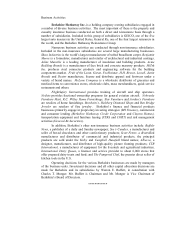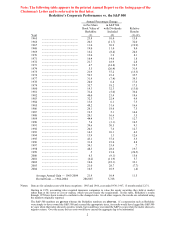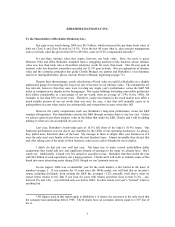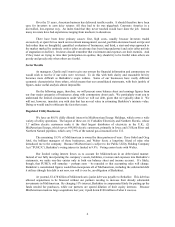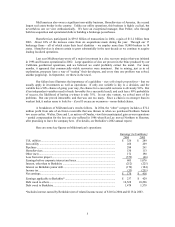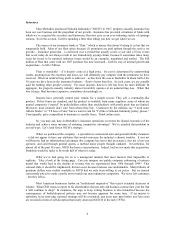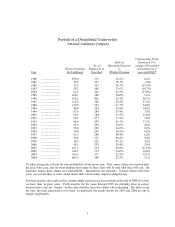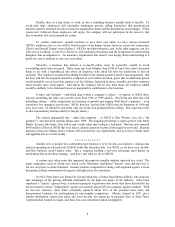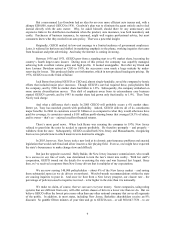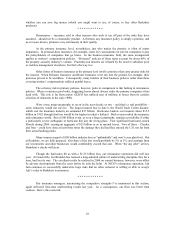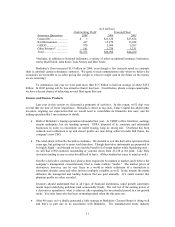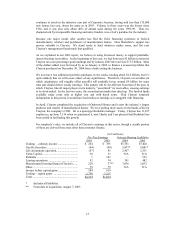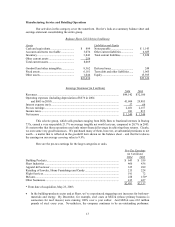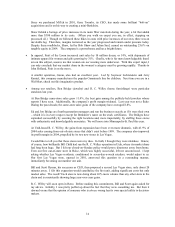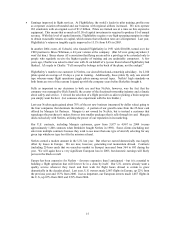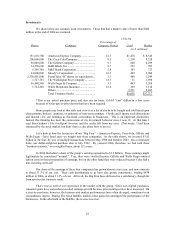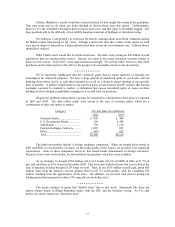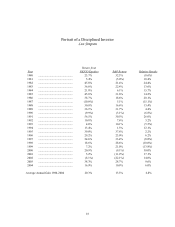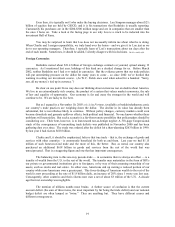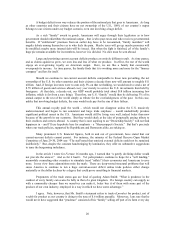Berkshire Hathaway 2004 Annual Report Download - page 12
Download and view the complete annual report
Please find page 12 of the 2004 Berkshire Hathaway annual report below. You can navigate through the pages in the report by either clicking on the pages listed below, or by using the keyword search tool below to find specific information within the annual report.
(in $ millions)
Underwriting Profit Yearend Float
Insurance Operations 2004 2004 2003
General Re ....................... $ 3 $23,120 $23,654
B-H Reinsurance.............. 417 15,278 13,948
GEICO ............................. 970 5,960 5,287
Other Primary*................. 161 1,736 1,331
Total................................. $1,551 $46,094 $44,220
*Includes, in addition to National Indemnity, a variety of other exceptional insurance businesses,
run by Rod Eldred, John Kizer, Tom Nerney and Don Towle.
Berkshire’ s float increased $1.9 billion in 2004, even though a few insureds opted to commute
(that is, unwind) certain reinsurance contracts. We agree to such commutations only when we believe the
economics are favorable to us (after giving due weight to what we might earn in the future on the money
we are returning).
To summarize, last year we were paid more than $1.5 billion to hold an average of about $45.2
billion. In 2005 pricing will be less attractive than it has been. Nevertheless, absent a mega-catastrophe,
we have a decent chance of achieving no-cost float again this year.
Finance and Finance Products
Last year in this section we discussed a potpourri of activities. In this report, we’ ll skip over
several that are now of lesser importance: Berkadia is down to tag ends; Value Capital has added other
investors, negating our expectation that we would need to consolidate its financials into ours; and the
trading operation that I run continues to shrink.
• Both of Berkshire’ s leasing operations rebounded last year. At CORT (office furniture), earnings
remain inadequate, but are trending upward. XTRA disposed of its container and intermodal
businesses in order to concentrate on trailer leasing, long its strong suit. Overhead has been
reduced, asset utilization is up and decent profits are now being achieved under Bill Franz, the
company’ s new CEO.
• The wind-down of Gen Re Securities continues. We decided to exit this derivative operation three
years ago, but getting out is easier said than done. Though derivative instruments are purported to
be highly liquid – and though we have had the benefit of a benign market while liquidating ours –
we still had 2,890 contracts outstanding at yearend, down from 23,218 at the peak. Like Hell,
derivative trading is easy to enter but difficult to leave. (Other similarities come to mind as well.)
Gen Re’ s derivative contracts have always been required to be marked to market, and I believe the
company’ s management conscientiously tried to make realistic “marks.” The market prices of
derivatives, however, can be very fuzzy in a world in which settlement of a transaction is
sometimes decades away and often involves multiple variables as well. In the interim the marks
influence the managerial and trading bonuses that are paid annually. It’ s small wonder that
phantom profits are often recorded.
Investors should understand that in all types of financial institutions, rapid growth sometimes
masks major underlying problems (and occasionally fraud). The real test of the earning power of
a derivatives operation is what it achieves after operating for an extended period in a no-growth
mode. You only learn who has been swimming naked when the tide goes out.
• After 40 years, we’ ve finally generated a little synergy at Berkshire: Clayton Homes is doing well
and that’ s in part due to its association with Berkshire. The manufactured home industry
11


